Origin
Airport Twente (also called Twenthe Airbase) was founded a long time ago. Around 1910 they wanted to be able to land with a Blériot plane on a field in the area to demonstrate various flying skills. In 1913 another demonstration was given in a Spin (airplane) near Oldenzaal. All this aroused the interest of a number of local entrepreneurs who jointly started the construction of a temporary airfield around 1921. It was not until 1929 that the municipalities of Oldenzaal, Enschede, Hengelo and Lonneker were convinced that there was a future in aviation, partly because Schiphol’s growth did not go unnoticed. Together they decided to invest in Twente airport. As a result, it grew in size, maintenance was better organized and facilities were built such as a hangar, restaurant and parking. In 1932 the airship “grave Zeppelin” paid another visit.
In the 1930s a glider association was founded and military exercises were held with Fokker aircraft. Before the war it was never used as a military airport, which only came after the war. Until 2007 it was used as a Dutch military airport. After 2007 it is a recreational airport for gliders, among other things, and has largely been converted into a nature reserve.
construction of Fliegerhorst
When the Second World War broke out, the airfield was officially closed in 1940 and the hangar blown up.
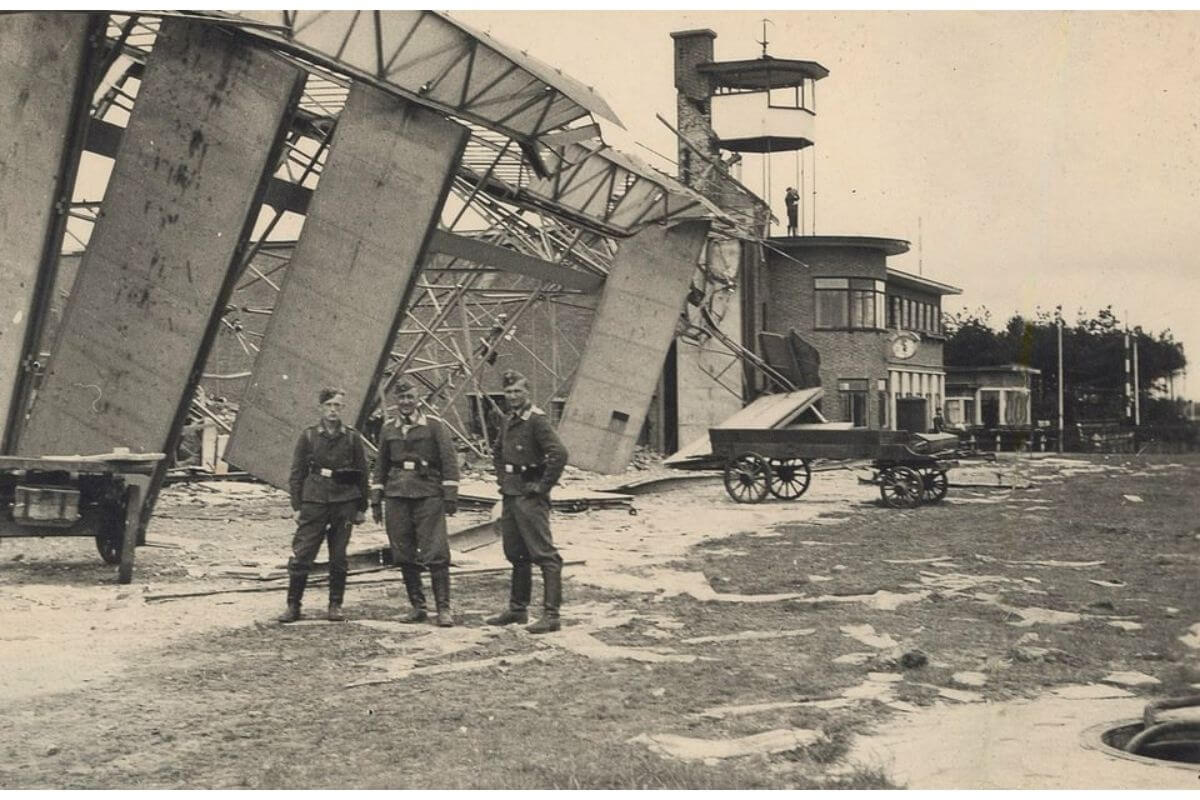
Initially the Germans did not show much interest in the airport, it was not until late summer that plans began to convert Twente into a “Fliegerhorst”, a German name for an important, large, military airfield. Fliegerhorst Twente, including the radar setup (remains of stellung Fox can still be found), was part of a chain of radar installations and intermediate airports. This chain ran roughly from France to Scandinavia, if planes were detected somewhere it was passed on to the nearest airbase and interceptors were sent to it. This was an important part of Germany’s defense against bombing raids from England. Other well-known air bases in the Netherlands were, for example, Soesterberg, Vonkel, Venlo and Deelen.
From 1941 the airfield was also suitable as a night fighter base.
The conversion of the airport to Fliegerhorst was a gigantic job for which many local contractors from all over the area were deployed. Most of them did this more or less voluntarily. Due to the economic conditions and the war, there was little work, and the Germans again offered them an opportunity to earn a living. In addition, the Germans paid quite well. Nevertheless, there were also contractors who had no conscientious objection at all and made a lot of money with it. What not everyone knew is that Dutch banks were obliged to lend the Germans money for the construction of the airport. After the war, most contractors were all separately assessed and convicted, because not everyone had been equally “wrong” and tailor-made penalties were imposed.
Construction continued until almost the end of the war, which is why it is almost impossible to make a map of the airport showing what it definitely looked like, because it was constantly changing.
The bricks for many buildings were mainly supplied by the Smulders and Mulder brickfactory, which had been near the Fliegerhorst long before the war. At one point during the war it was out of service due to fire, and it served as a storage place for a while. The factory no longer exists, but has left traces in the landscape. Before and during the war, the clayholes were still used as a swimming pond, and today as a fishing pond. After the war, ammunition was dumped in it, as a result of which, even until the 1980s, an occasional shell exploded spontaneously and many dead fish surfaced again. The clay holes have already been remediated a few times and most of the ammunition has been removed.
Blending into the environment
The Luftwaffe built Fliegerhorst Twente on the premise that it should not stand out from the air. The runways were painted green and arable farming was carried out on the adjacent grass.
In addition to the Prins Bernhardpark (also known as the Oostkamp) and the Overmaat camp for maintenance crews, the south camp was an area with various army buildings such as a hospital, canteen, shelters, church, garages, etc. Families were forced to move. The buildings had been designed in a standardized way and had to pass as local (“Twents”) farms. However, the architectural style was German, not Twents, but seen from the air, that should not matter. The Luftwaffe had a preference for a bright red brick with walls of 55 cm, which were considered shard-resistant. Sometimes the local architectural style was imitated, such as a local style roof (“zadeldak”). The shutters on the windows were painted green / red / white (four triangles) to make it look even more like farmhouses. In reality, these were steel shutters to protect the windows from shards.
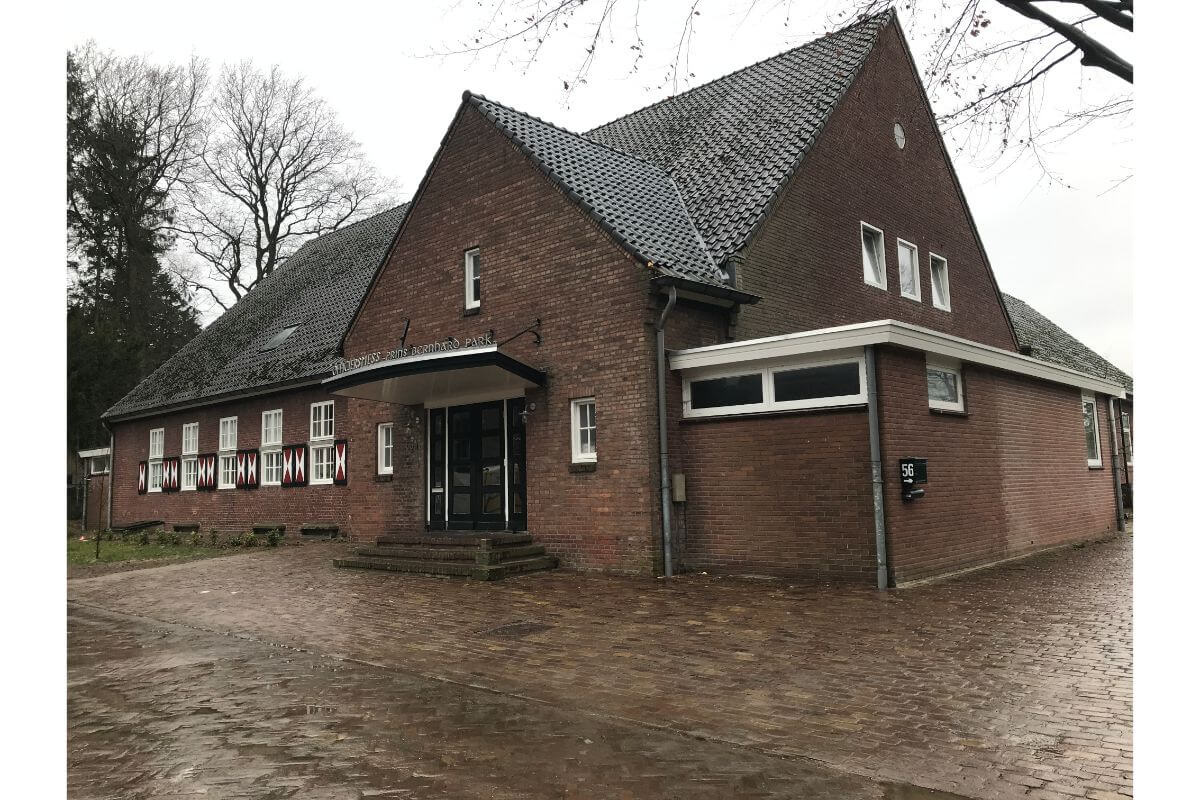
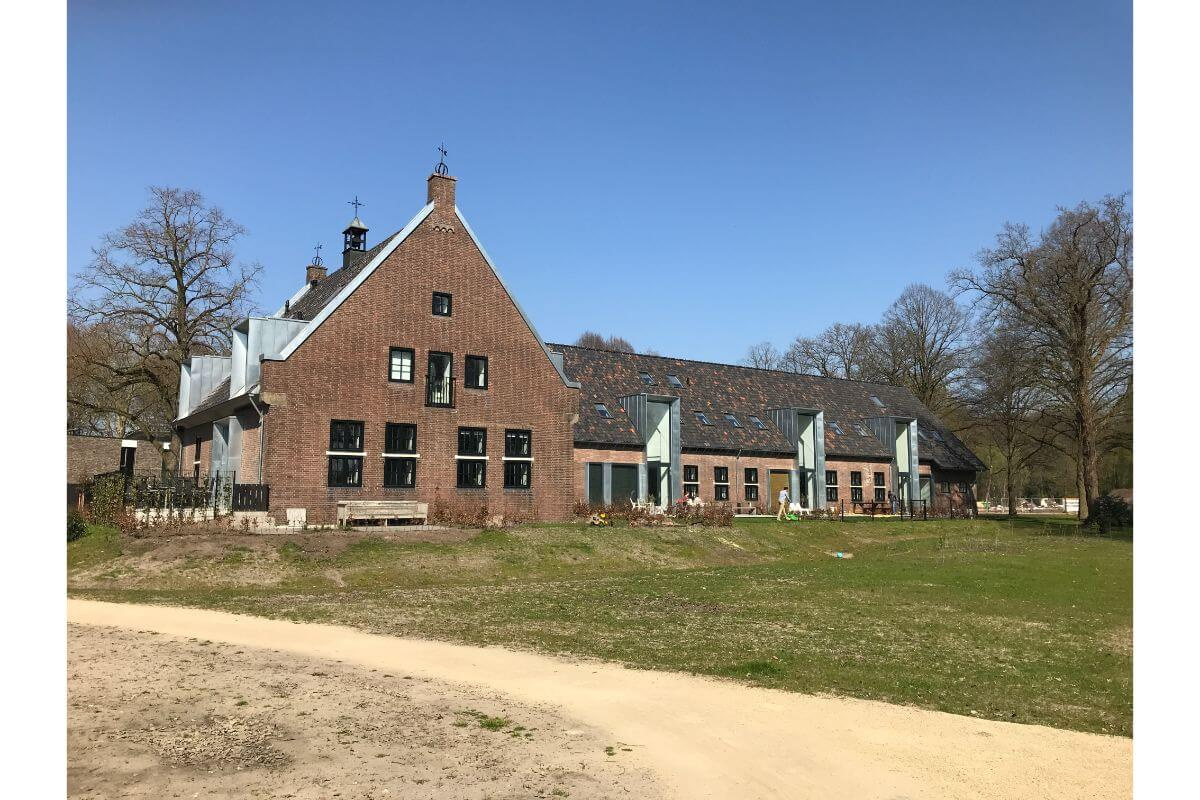

Bombing
During the war, the airfield was bombed regularly, which was dangerous not only for the Germans, but also for the residents who were allowed to continue to live in the area. In 1944 the largest bombing raid was carried out by 75 flying fortresses.

For the defense there were several FLAK (Fliegerabwehrkanone) anti-aircraft gun positions of 20mm and 88mm in the area and on the airfield itself. On top of the Lonnekerberg was a FLAK tower with a lookout post and 20mm guns, the foundations of which are still visible today. Fake airfields had also been built, one in Buurse and one in Weerselo, complete with fake hangars and fake airplanes. Both were bombed only once during the war.
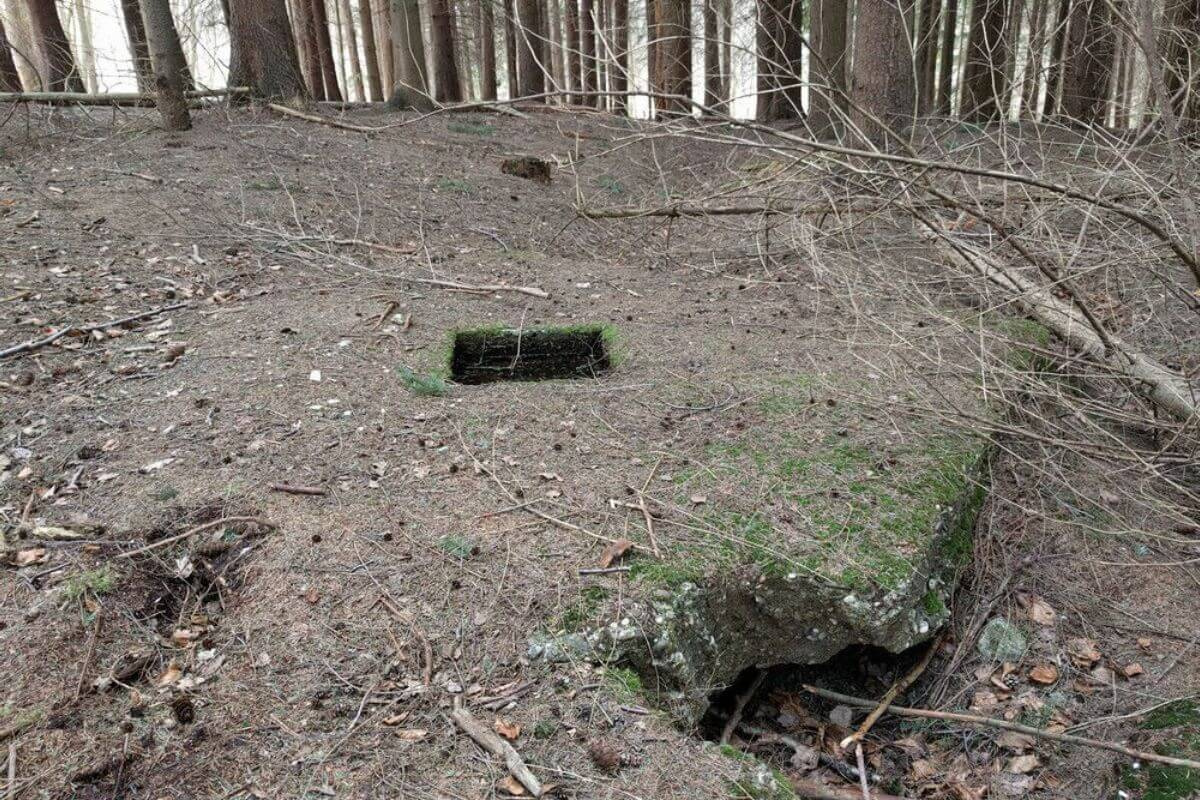
Allied takeover of Fliegerhorst Twente
In 1945 the base had fallen into disrepair, the occupation was still low and the German air force did not have enough aircraft to fully equip the air base. The war situation made it impossible to expand much and repairs were usually not made. When a major Allied bombing raid was carried out in March of that year, the last remaining Germans fled. At the end of March, the English liberated Enschede, and there were still some fierce skirmishes near the airfield, but soon they took the airfield. The English built several hangars there, two of which can now be seen and are used as an event hall and film studio. The Allies named it airbase B-106 and housed Mosquitos, Spitfires and Typhoons there.
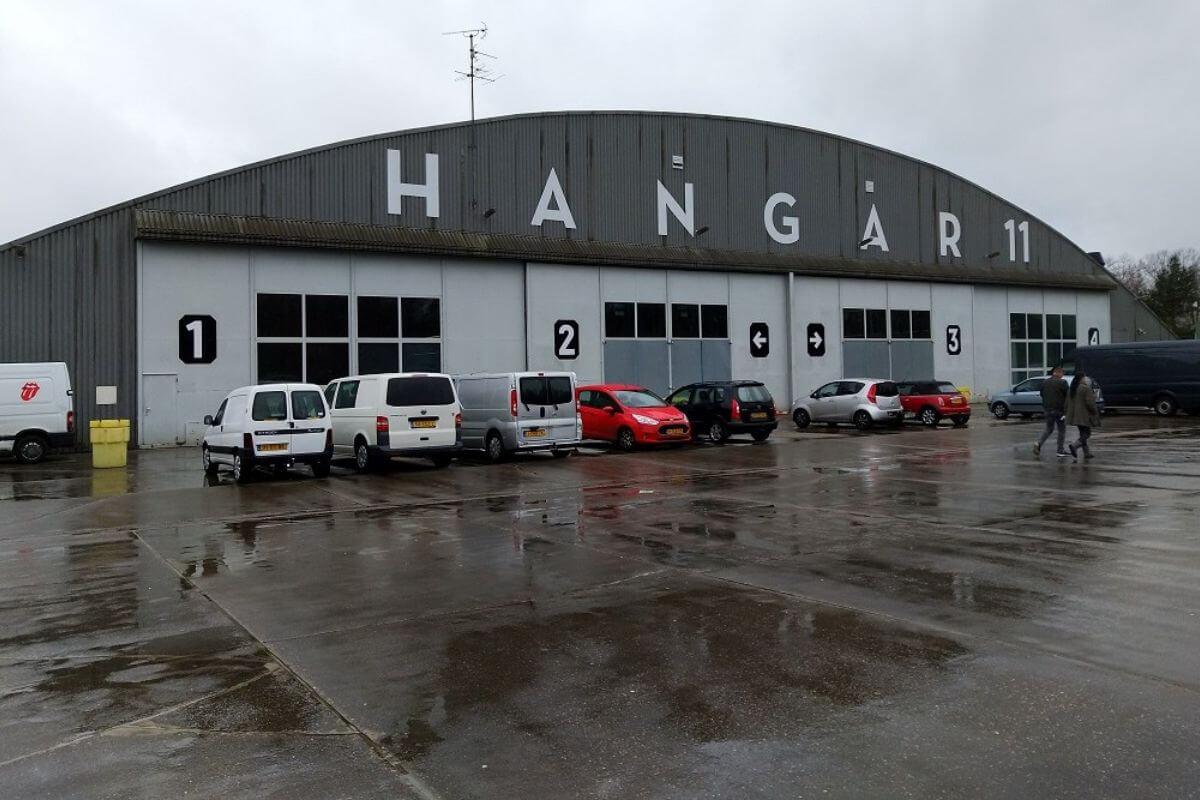
Visible remnants
Today there are still hundreds of small and large remnants visible in the landscape such as: bunkers for rocket fuel, a firing range for aircraft and a firing range for small arms, a gefechtsstand (command center), a compass disc (to calibrate the compass of aircraft), many ruins of hangars, bunkers, the south camp, camp Overmaat and the Prins Bernhardpark (former staff quarters that are currently being used as private homes).
In the woods around the airport, many remains are also visible, such as taxiways and “splitter boxes”. The planes were hidden in the woods around the airport, stored in u-shaped earthen walls, so that they were reasonably protected against flying shards during bombing.

Rocket fuel bunkers
Along the edge of the pasture are five rocket fuel storage bunkers in a row. The bunkers were used for the storage of C-dust and T-dust, two liquids that, after being combined, formed fuel for rocket planes, such as the Messerschmitt Me 163 and Me 263. These planes were never stationed at Twente, however, it never happened. because the war had ended.
The fuel was also used to power parts of V2 missiles, but there is no evidence that this storage was used for that purpose.
Both liquids were scrupulously kept apart because the rocket fuel that formed after mixing could quickly ignite. That is why the vertically arranged fuel tanks were placed above a bowl-shaped drip tray, which was connected to a channel that was filled with water. After filling the tanks, the tanks were always rinsed with water. Any leaked liquid, mixed and highly diluted with the rinse water, could run out through the drip tray into the channel on the side of the buildings. Liquid was also collected and diluted in this way if a storage tank were to leak.
These bunkers are very unique, there is only 1 other location in the world where they are still standing, and they are not in a good condition like this one. There are restoration plans, but unfortunately they have not yet been implemented.

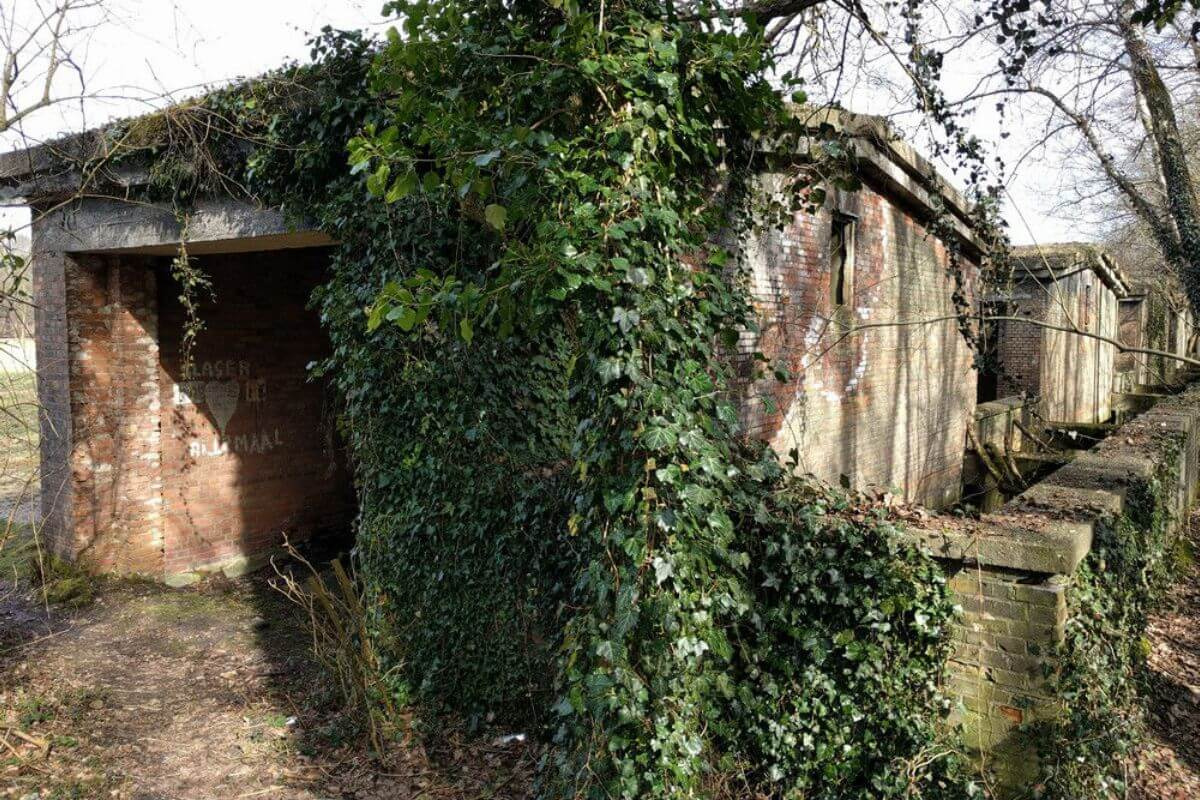
Shooting range
At the shooting range they tested firearms and guns from aircraft. At the start of the shooting range, they mainly deployed Messerschmitts. Ahead stood a bullet trap, where bullets were caught in the loose sand. There is a remembrance path with personal stories from the wartime in the Fliegerhorst area. The shooting range itself has been restored. In the forest next to it is a smaller shooting range for small arms.
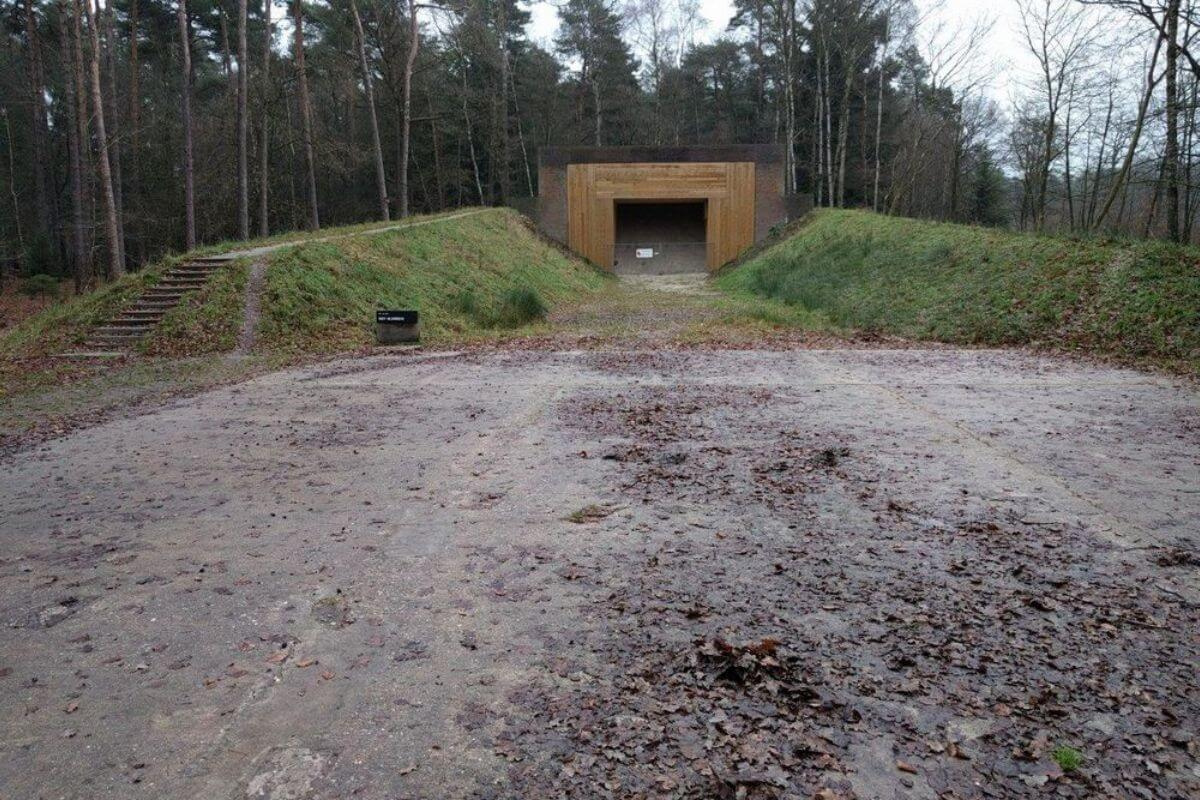

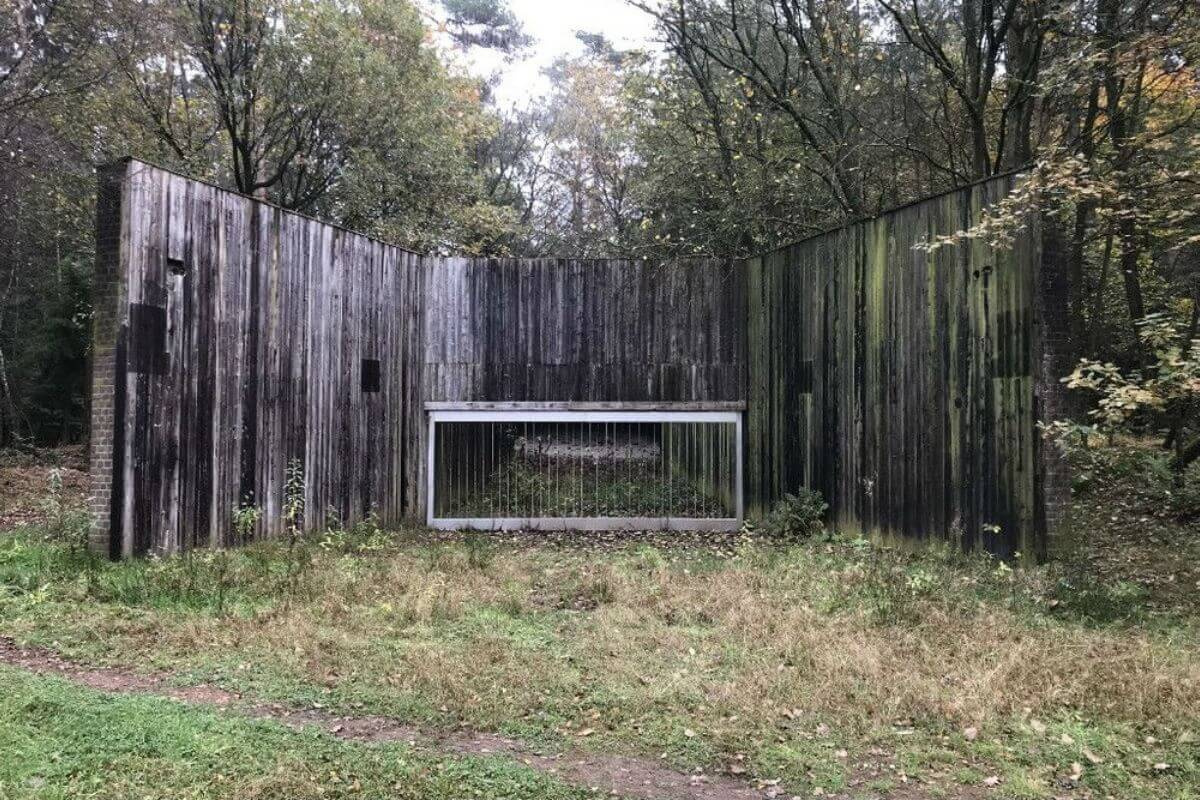
Gefechtsstand
The Gefechtsstand was a ‘combat post’ along the border. From this command center, about 80 people monitored the airspace. The information was collected here, presented on a frosted glass screen and used in the defense of the occupied Netherlands or to attack allied aircraft flying towards Germany. Much information was obtained from Stellung Fox, a radar setup on the east side of the airbase, of which the Würzburg and Freya radars were located in Agelo.
The remains of foundations and floors are still visible. Text boards have been added because this is part of the remembrance path.

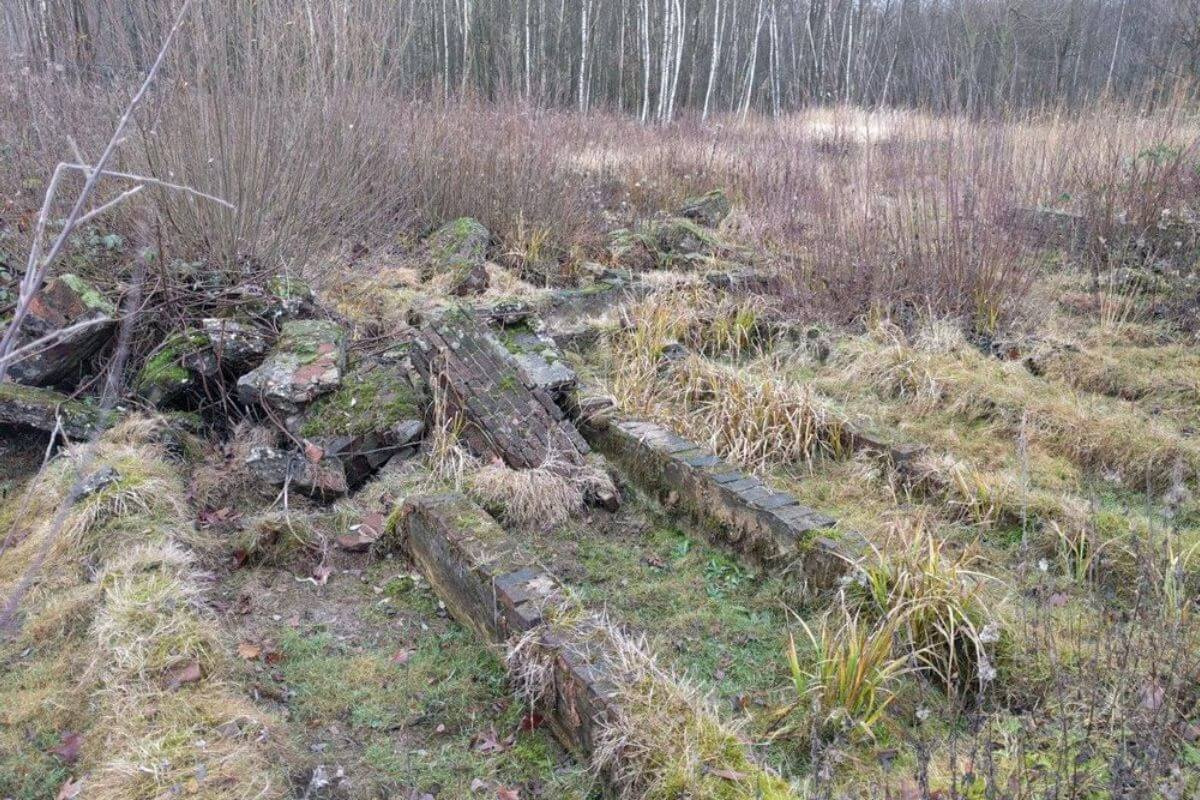
Compass disc a.k.a. Compensation disc
During the Second World War, all major German airfields were fitted with a compensation disc to calibrate the compass in the aircraft. The compass in the airplane was then compared with the direction of the compass ring of the compensation disc. The aircraft was placed on the compensation disc, then the aircraft was pointed north and the compass was adjusted. After that, other checks were carried out on the compass in the plane.
There are several compensation discs. One is located at Gilze-Rijen air base and is now a protected monument for military cultural heritage. There was also one at Deelen airfield.
The construction consisted of a concrete construction (without reinforcing steel) containing a fully wooden turning construction. The ball bearings were made of glass. Metal was not used so as not to disturb the compass. The aircraft was placed on it in flight mode, with the engines running, after which the compass on board could be calibrated in as real flight conditions as possible.
These compensation discs are still present in the Netherlands at Twenthe Air Base and Deelen Air Base near Schaarsbergen.


Visit
The site is free to visit from sunrise to sunset. There are walkways, cycling paths, MTB trails or, if you must, bring your horse. Park the car at the parking lot and enjoy the site. Most objects are without restrictions but objects like the Compass Disk are on private property. So take care not to stroll blindly into someone’s back yard.
Text and photos provided by Alex Ossel
Sources:
- From Turf to Fliegerhorst, C. Cornelissen.
- Lonneker War Stories, W. Bulter.
- Traces of war.
- Photos compass disc, Maarten Scholtens.
- Photo blown up hangar and airplane firing range, NIMH.
- Various direct and indirect sources (oral stories, people, books, internet, local newspapers and media, location research).